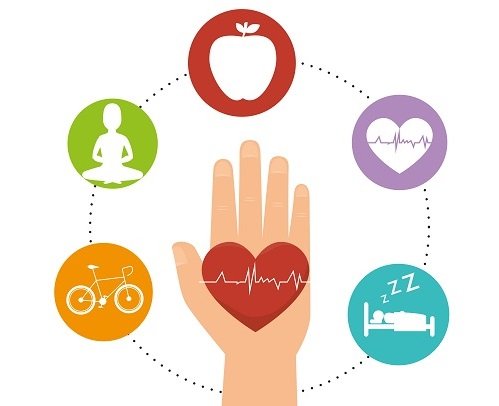Conquering Seasonal Allergic Rhinitis: A Comprehensive Guide to Relief and Wellness
Seasonal allergic rhinitis, commonly known as seasonal allergies, significantly diminishes quality of life, manifesting as rhinorrhea (runny nose), ocular pruritus (itchy eyes), and nasal congestion. Effective management, however, is attainable through a multi-faceted approach. This guide provides actionable strategies to mitigate seasonal triggers and enhance well-being, promoting optimal participation in seasonal activities.
1. Allergen Identification: The Foundation of Personalized Management
Accurate identification of specific allergens is paramount for effective treatment. Common triggers include pollen (from trees, grasses, and weeds), dust mites, animal dander, and mold spores. Employing the principles of epidemiological investigation, maintaining a detailed allergy diary—meticulously documenting symptom onset and correlating it with potential exposures—is crucial. This personalized approach allows for the development of a targeted management plan, maximizing efficacy and minimizing disruption. This approach aligns with the principles of personalized medicine, tailoring treatment to the individual's unique allergenic profile. The resulting data can be viewed through the lens of a time-series analysis, highlighting temporal patterns of symptom exacerbation.
2. Proactive Exposure Reduction: Environmental Control Strategies
Once allergens are identified, proactive exposure reduction becomes critical. Utilizing predictive modeling, individuals can leverage local pollen counts—available through weather forecasts or specialized allergy applications—to strategically plan outdoor activities. On high-pollen days, minimizing time outdoors, particularly during peak pollen release (typically mornings), significantly reduces allergen load. This preventative approach aligns with the principles of primary prevention in public health, focusing on minimizing exposure before symptoms manifest. The application of risk stratification allows for tailored recommendations based on individual susceptibility and pollen levels.
3. Indoor Environmental Modification: Creating an Allergy-Safe Home
Transforming the home environment into an allergen-minimized space is crucial. This involves rigorous cleaning protocols, employing HEPA-filtered vacuum cleaners and regular dusting. Furthermore, utilizing high-efficiency particulate air (HEPA) filtration systems significantly reduces airborne particles. Regular laundering of bedding in hot water eliminates dust mites. These actions align with the principles of environmental modification, reducing allergen exposure in the home environment. This process can be viewed through the lens of Bronchial challenge testing, which quantifies the response to allergen exposure and thereby informs the need for stronger control measures.
4. Personal Hygiene Protocols: Minimizing Allergen Transfer
Following outdoor exposure, showering and changing clothes promptly removes adhering pollen and allergens from skin and clothing. This simple yet effective habit substantially reduces symptom severity. This approach, informed by principles of hygiene and infection control, demonstrates a straightforward but impactful intervention for minimizing allergen exposure.
5. Pharmacotherapy and Adjunctive Therapies: Symptom Management and Relief
Nasal irrigation using saline nasal spray or a neti pot effectively clears nasal passages of trapped allergens. Over-the-counter (OTC) antihistamines and decongestants may provide temporary symptom relief. However, consultation with a physician or pharmacist before commencing any new medication—particularly with pre-existing conditions or concomitant medications—is vital to ensure safe and effective treatment. This emphasizes the principles of rational pharmacotherapy, integrating drug choices with individual health profiles and existing medication regimens.
6. Advanced Management: Immunotherapy and Specialist Referral
For persistent or severe allergic rhinitis, allergen-specific immunotherapy (allergy shots) offers potential long-term management. This approach gradually desensitizes the immune system to specific allergens. Allergologists conduct comprehensive allergy testing to determine optimal treatment, aligning with principles of precision medicine. Referral to an allergist—particularly for severe or complex cases—ensures personalized care and expert guidance. The effectiveness of this immunotherapy aligns with the principles of immunomodulation, shifting the immune response from an allergic to a tolerant state.
7. Holistic Lifestyle Modification: Synergistic Approaches to Wellness
Establishing an allergen-free zone (e.g., a bedroom) provides refuge from triggers. Utilizing air conditioning and keeping windows closed during peak pollen seasons prevents allergen ingress. Protective gear (hats, sunglasses, masks) during peak allergy seasons further reduces exposure. Adequate hydration thins mucus and alleviates congestion. A balanced diet supports immune function. Stress management (deep breathing, meditation, yoga) mitigates allergy exacerbation, considering the established link between stress and immune function. This integrates concepts from behavioral medicine, promoting overall well-being through lifestyle adjustments and reducing stress response, a known allergy trigger.
Conclusion and Recommendations
Effective allergic rhinitis management necessitates a comprehensive approach integrating proactive measures, personalized treatment, and lifestyle modifications. A multidisciplinary approach, involving primary care physicians, allergists, and potentially other specialists, will improve patient outcomes. Continuous monitoring of symptoms and allergen levels through methods like peak expiratory flow (PEF) measurement and symptom diaries will facilitate iterative treatment adjustments. Future research should focus on developing more precise predictive models for pollen levels and exploring novel immunotherapeutic approaches such as sublingual immunotherapy (SLIT). This holistic approach emphasizes the importance of patient empowerment, self-management strategies, and the role of health professionals in guiding this process.
Reader Pool: What are the potential limitations of relying solely on self-reported symptom diaries in managing seasonal allergic rhinitis, and what alternative or complementary methods could enhance the accuracy and reliability of assessment?



No comments yet. Be the first to share your thoughts!